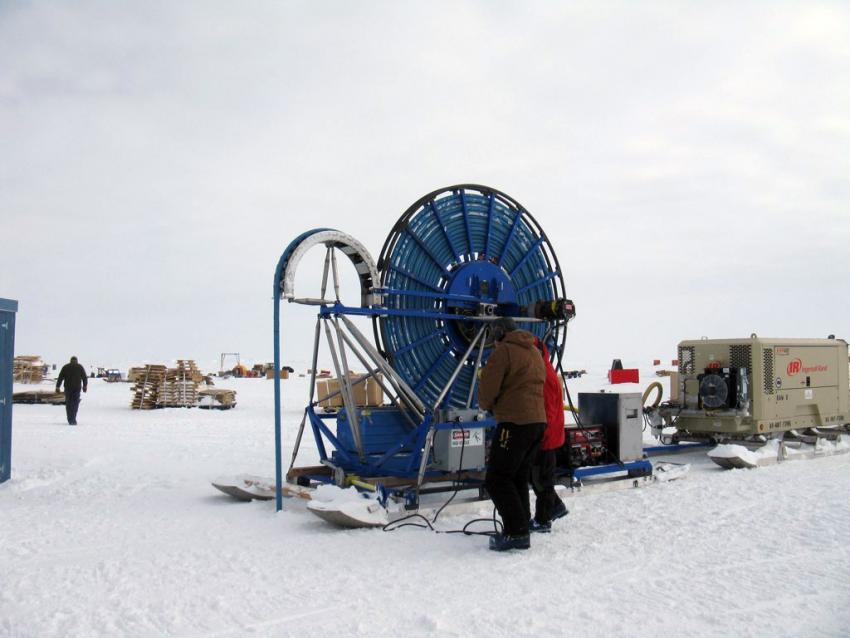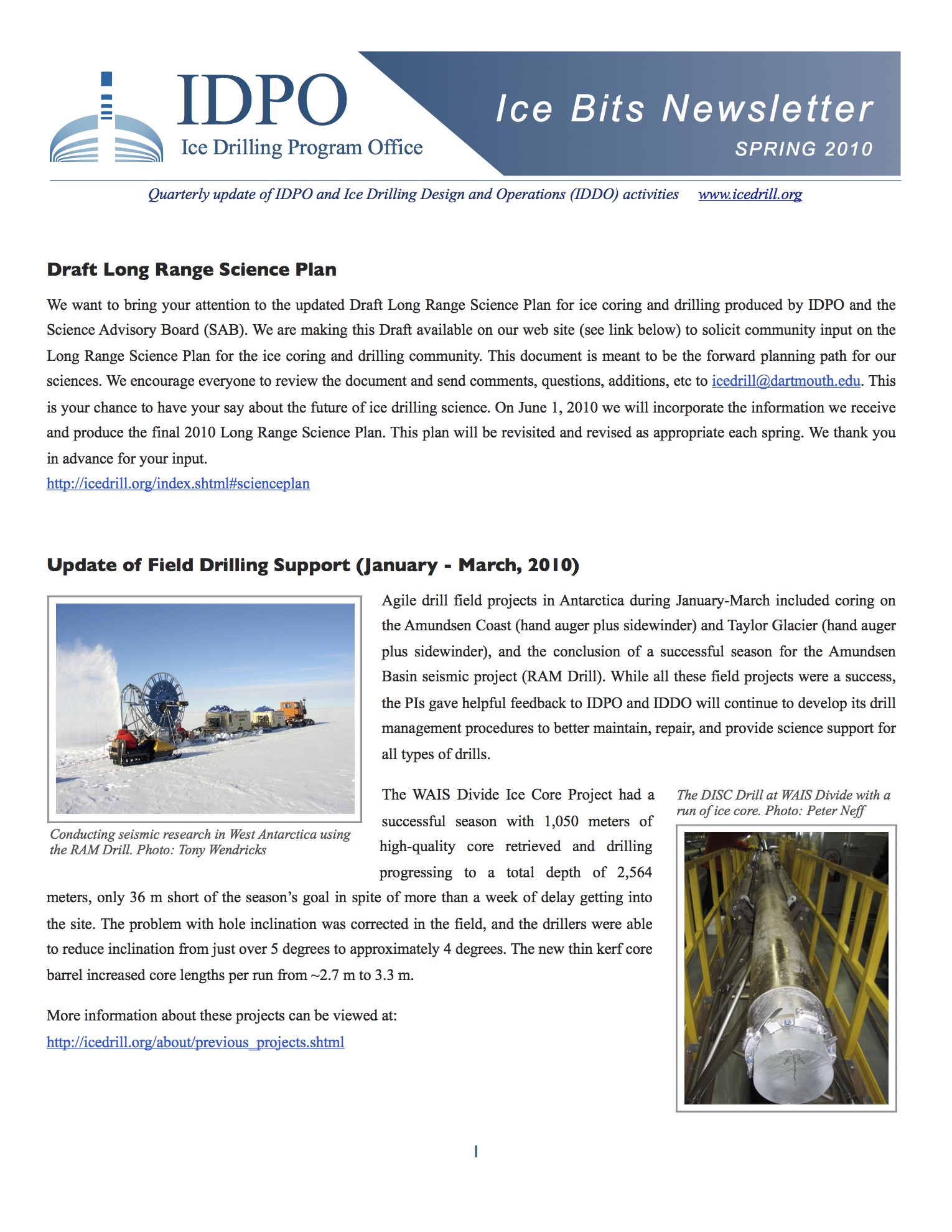We want to bring your attention to the updated Draft Long Range Science Plan for ice coring and drilling produced by IDPO and the Science Advisory Board (SAB). We are making this Draft available on our web site (see link below) to solicit community input on the Long Range Science Plan for the ice coring and drilling community. This document is meant to be the forward planning path for our sciences. We encourage everyone to review the document and send comments, questions, additions, etc to icedrill@dartmouth.edu. This is your chance to have your say about the future of ice drilling science. On June 1, 2010 we will incorporate the information we receive and produce the final 2010 Long Range Science Plan. This plan will be revisited and revised as appropriate each spring. We thank you in advance for your input.
Draft Long Range Science Plan
- Long Range Plans
Update of Field Drilling Support (January - March, 2010)
- Fieldwork
- Rapid Air Movement (RAM) Drill
- DISC Drill
Agile drill field projects in Antarctica during January-March included coring on the Amundsen Coast (hand auger plus sidewinder) and Taylor Glacier (hand auger plus sidewinder), and the conclusion of a successful season for the Amundsen Basin seismic project (RAM Drill). While all these field projects were a success, the PIs gave helpful feedback to IDPO and IDDO will continue to develop its drill management procedures to better maintain, repair, and provide science support for all types of drills.
The WAIS Divide Ice Core Project had a successful season with 1,050 meters of high-quality core retrieved and drilling progressing to a total depth of 2,564 meters, only 36 m short of the season's goal in spite of more than a week of delay getting into the site. The problem with hole inclination was corrected in the field, and the drillers were able to reduce inclination from just over 5 degrees to approximately 4 degrees. The new thin kerf core barrel increased core lengths per run from ~2.7 m to 3.3 m.
More information about these projects can be viewed at: https://icedrill.org/fieldwork
Development Highlights (January - March, 2010)
- DISC Drill
- Replicate Coring Drill
- Intermediate Depth Drill (IDD)
Replicate coring
In the second quarter FFY2010, design of the "actuated" anti-torques, which will allow the drill to be steered, was completed. IDDO ordered components for the prototype model of the anti-torque actuators and test fixture. A control program was written to allow testing of the mechanical system, and initial testing began. Replicate coring capability for the DISC Drill will be ready beginning with the 2011/12 Antarctic field season.
A new drill for intermediate depth drilling
A white paper justifying the need for an intermediate drill is in preparation by Eric Saltzman, Chair of SAB, and Eric Steig, ICWG representative. Because the new NZ drill (designed from the Danish Hans Tausen drill) may provide an excellent prototype for this drill, detailed science requirements will be developed with the broader community by IDPO-IDDO after results of NZ drill testing at NEEM this coming summer. IDDO engineer Tanner Kuhl will be at NEEM to witness the testing of the NZ drill. This will give an excellent first-person assessment of aspects of the drill that should be replicated and identification of possible problem areas. Opportunities for funding acquisition of a drill are being explored.



